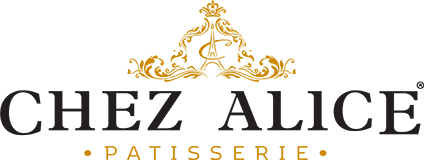Delicate, colorful, and delightfully crisp on the outside with a smooth, creamy filling inside—the macaron is one of France’s most iconic confections. While today it’s often associated with elegant patisseries and chic café culture, the macaron has a long and surprising history that spans centuries and countries. Let’s take a look at how this beloved treat became a symbol of French culinary artistry.
Origins: Not So French After All?
Although we now think of the macaron as a distinctly French pastry, its roots actually trace back to Italy. The word macaron comes from the Italian maccherone, meaning fine dough or paste. It’s believed that macarons were brought to France in the 16th century by Catherine de' Medici’s chefs when she married King Henry II. These early versions resembled simple almond cookies made with ground almonds, egg whites, and sugar—without the fillings or pastel hues we know today.
In fact, these early macarons were single, crisp yet chewy cookies—not the sandwich-style treat we associate with modern patisseries.
The French Reinvention
The transformation into the double-decker macaron filled with ganache or buttercream occurred much later, in the 1830s. This new version—called the macaron Parisien—is widely credited to Pierre Desfontaines, the grandson of Louis-Ernest Ladurée, founder of the famous Parisian pâtisserie Ladurée.
From then on, the macaron became a fashionable delicacy in Paris and beyond. It evolved in both flavor and presentation. Soft pastels and bold colors became a signature look, while fillings expanded from chocolate and raspberry to exotic blends like yuzu, rose, pistachio, lavender, and even foie gras.
Regional Variations in France
Interestingly, not all macarons in France are the same. Various regions developed their own versions:
- Macarons d’Amiens – A denser almond cake-like version found in northern France.
- Macarons de Nancy – A simpler style closer to the original single almond cookie.
These regional specialties reflect the macaron’s adaptability and long-standing popularity across the country.
Macarons Around the World
Today, the macaron is a global favorite, featured in bakeries from Tokyo to New York. In some places, they’ve taken on local flavors and interpretations while keeping the signature texture and elegance. For example:
- In Japan, macarons are sometimes infused with matcha or sakura (cherry blossom) flavors.
- In the U.S., bakeries have explored playful takes like birthday cake, peanut butter and jelly, and pumpkin spice macarons.
Despite regional variations, the classic French macaron remains the most celebrated and widely recognized.
More Than Just a Dessert
Beyond their exquisite taste and visual charm, macarons have become a cultural symbol of sophistication and indulgence. They are often associated with:
- Special occasions: Weddings, baby showers, and holidays often feature macarons as a luxurious treat or edible gift.
- Artisan craftsmanship: Making the perfect macaron is famously tricky. From properly whipped meringue to the delicate folding technique (macaronage), these cookies are a true test of a baker’s skill.
Why Macarons Make the Perfect Gift
Macarons are more than just a sweet treat—they're an experience. With their elegant appearance, vibrant colors, and delicate flavors, macarons are a thoughtful and luxurious gift for any occasion. Whether you're celebrating a birthday, sending a thank-you, or surprising someone just because, a beautifully packaged box of macarons feels personal and special. Their long-standing association with French sophistication makes them ideal for impressing both casual dessert lovers and serious foodies alike.
- Elegant Presentation: Macarons are often arranged in chic boxes, making them visually stunning right out of the package.
- Flavour Variety: From classic vanilla and pistachio to exotic passionfruit and lavender, there's a macaron to please every palate.
Conclusion
The macaron is more than just a delicious, bite-sized dessert—it’s a pastry steeped in history, cross-cultural exchange, and creative reinvention. From its humble Italian beginnings to its glamorous French makeover and global popularity, the macaron represents both tradition and artistry in baking.
Whether you enjoy a classic raspberry macaron or an adventurous seasonal flavor, you’re taking part in a centuries-old tradition that continues to inspire pastry lovers and bakers alike.
FAQ: The History of the Macaron
No, they are completely different desserts. Macarons are delicate French sandwich cookies made with almond flour and filled with ganache, jam, or buttercream. Macaroons, on the other hand, are dense, chewy coconut cookies that originated elsewhere and typically do not have a filling.
The filled version of the macaron—two cookies with a creamy center—is credited to Pierre Desfontaines of Ladurée, a famous Parisian pâtisserie, in the early 20th century.
Macarons require precision and practice. The process involves carefully whipping meringue, folding in almond flour just enough (a step called macaronage), piping evenly, and baking at the right temperature to achieve the signature smooth shell, ruffled pied (foot), and soft interior.
Macarons were introduced to France in the 16th century, likely by Italian chefs in the court of Catherine de’ Medici. The version we know today evolved over time and became a staple in French pâtisserie culture.










